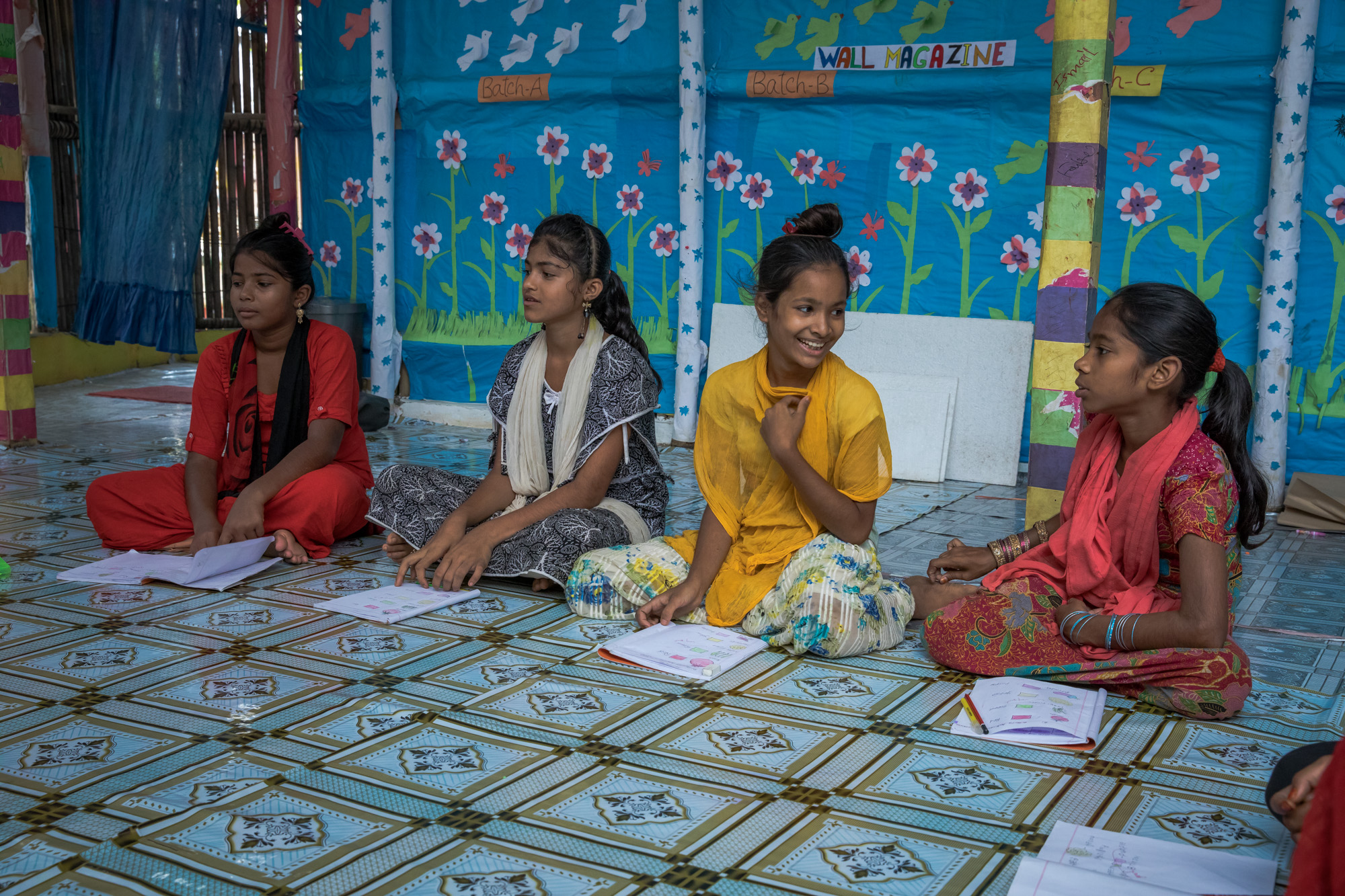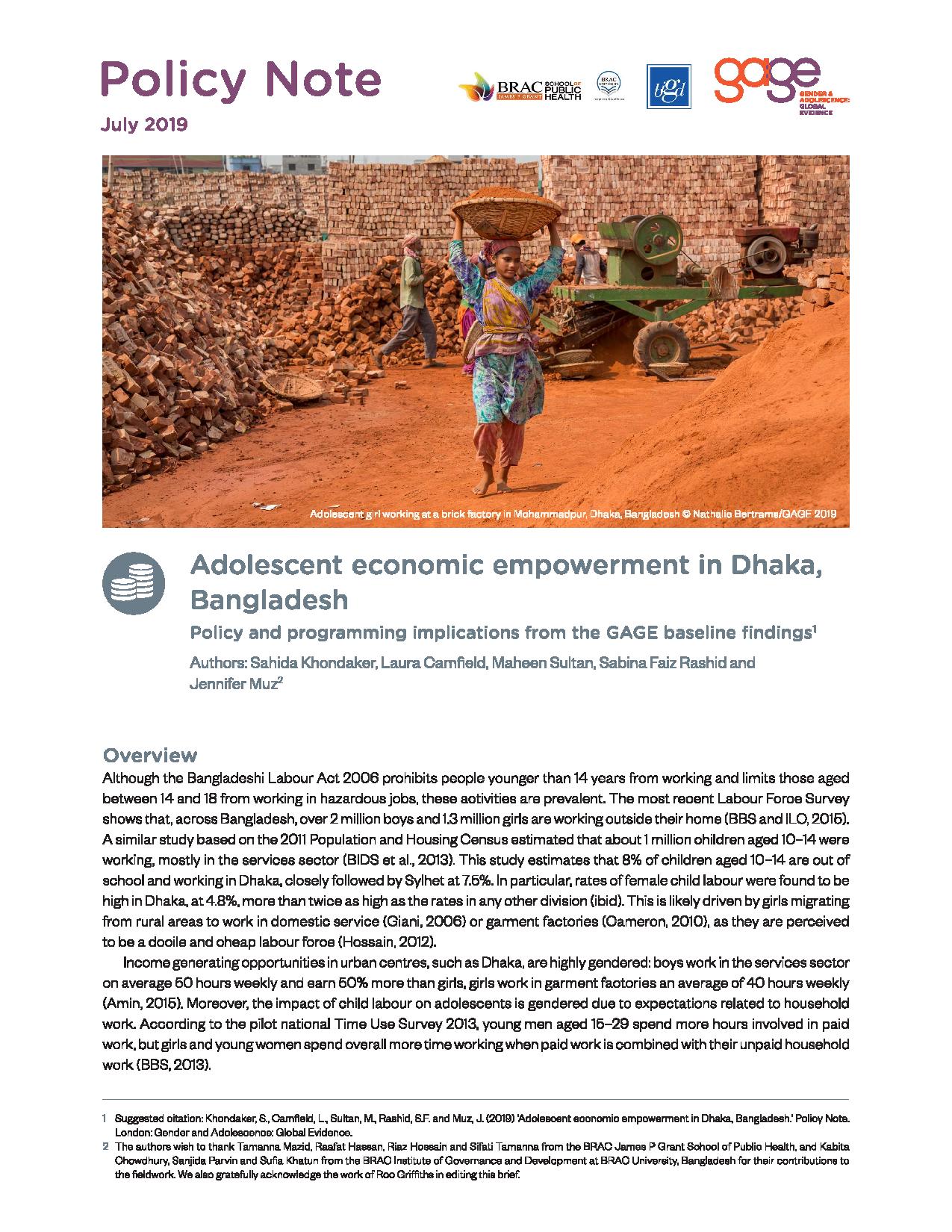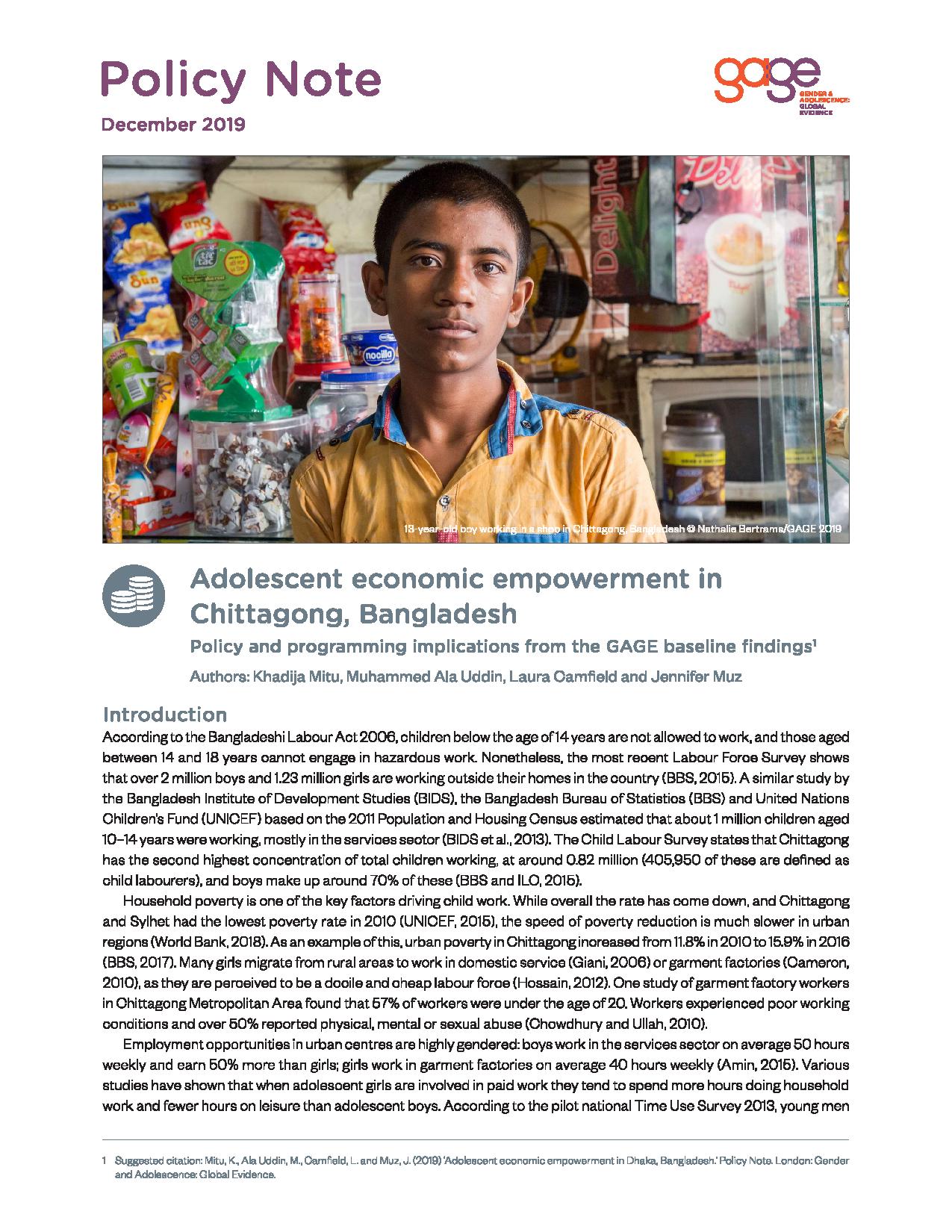
Identifying latent classes of empowerment among early adolescent girls and the factors that cultivate them: Evidence from a community-based skills training program
publication
Identifying latent classes of empowerment among early adolescent girls and the factors that cultivate them: Evidence from a community-based skills training program
21.03.2022 | Bangladesh
Country
Bangladesh
Capability domains
Education and learning
Audience type
Researcher
Year of publication
2022
Authors
Christina Misunas and Sajeda Amin
Empowering girls is an important goal in development but remains difficult to measure. This project develops survey-based empowerment measures that can be attributed to skill-building programs. The data come from the BALIKA project, a randomized controlled study designed to evaluate three skills programs among early adolescent girls in Bangladesh. We classified respondents at baseline and endline using latent class analysis according to empowerment constructs. Girls’ wealth, marital status, religion, and parents’ level of education predicted empowered responses but changed due to the program. Before the program wealthy girls gave more empowered answers but there were no wealth differences in empowerment after the program. Girls who received gender awareness training and tutoring support were significantly more likely to be empowered but not if they got livelihoods training. We conclude the program empowered girls in general and more if disadvantaged, thus reducing class differences.
Suggested citation
Misunas, C. and Amin, S. (2022) 'Identifying latent classes of empowerment among early adolescent girls and the factors that cultivate them: Evidence from a community-based skills training program' Journal of Adolescence 94(2): 148–165 (https://doi.org/10.1002/jad.12014)


